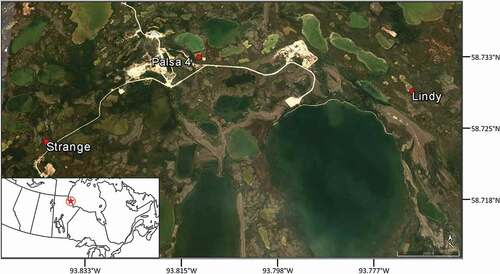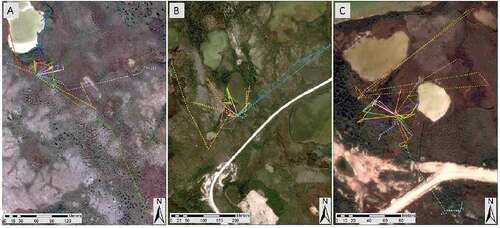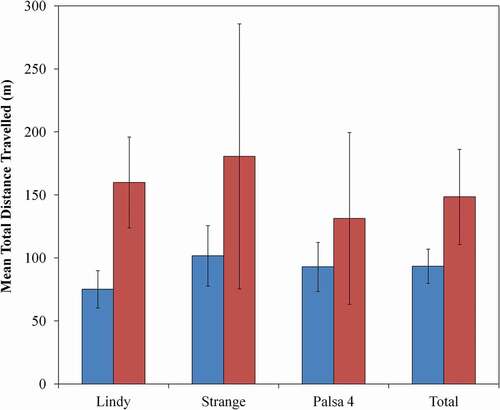Figures & data
Figure 1. Location of three wetlands near Churchill, Manitoba, Canada, where we tracked the movements and habitat use of wood frogs

Table 1. Summary information for wood frogs tracked near Churchill, Manitoba, Canada, in 2015 and 2016
Figure 2. Movement paths for wood frogs tracked near Churchill, Manitoba, Canada, in 2015 and 2016. We tracked sixteen frogs at Lindy (A), twenty-one frogs at Strange (B), and twenty frogs at Palsa 4 (C). For each wetland, an individual frog is represented by a unique combination of color and line style. Some individuals, such as those represented by the light-blue dotted line (B) and yellow dotted line (C), made movements away from and back to the wetland, and thus have a movement path that appears as a polygon

Figure 3. Mean total distance (m) traveled by radio-tracked male (blue bars; ± SE) and female (red bars; ± SE) wood frogs near three wetlands near Churchill, Manitoba, Canada. We tracked sixteen frogs (eight males and eight females) at Lindy, twenty-one frogs (eighteen males and three females) at Strange, and twenty frogs (nine males and eleven females) at Palsa 4

Table 2. Odds ratios (robust 95% confidence intervals) and test statistics from the best-fit conditional logistic regression model of microhabitat selection (1 m2 plots) by wood frogs near Churchill, Manitoba, Canada, in 2015 and 2016
Summary of radiotracking data and individual metrics for fifty-seven wood frogs tracked June–August 2015 and 2016
